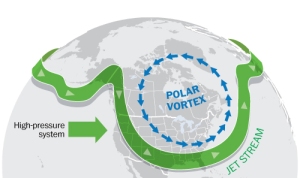 One of the key supervisory skills needed by every leader is the ability to give feedback to their team on individual performance. The reason is simple, if the team don’t know what you expect from them, you are unlikely to get the performance you need. If someone is doing the ‘right thing’ they need to know it’s ‘right’ and be encouraged to continue. If someone’s not doing what’s required they need to have their efforts redirected.
One of the key supervisory skills needed by every leader is the ability to give feedback to their team on individual performance. The reason is simple, if the team don’t know what you expect from them, you are unlikely to get the performance you need. If someone is doing the ‘right thing’ they need to know it’s ‘right’ and be encouraged to continue. If someone’s not doing what’s required they need to have their efforts redirected.
Feedback is different to motivation – a highly motivated worker producing the ‘wrong thing’ quickly and efficiently has the potential to do more damage than an unmotivated worker producing very little. The ideal is a highly motivated team, all doing the right thing and all knowing they are doing exactly what’s required. Effective feedback is one of the keys to achieving this nirvana.
The starting points are effective delegation, making sure each team member knows what they are expected to achieve and why; and a constructive team environment where people understand the ‘rules’ and are willing to help each other. Delegation is discussed in our White Paper: WP1091 The Art of Delegation. Aspects of team leadership are discussed in a range of posts at http://stakeholdermanagement.wordpress.com/?s=team.
Once your people are busy working, the opportunity to use feedback effectively cuts in. As a starting point all types of feedback need to be genuine. The purpose of giving feedback is to improve the behaviour of the other person and to bring out the best in your team and this won’t happen is the feedback is seen as disingenuous. There are essentially three types of feedback and all three have their place:
- Positive reinforcement where you acknowledge good work.
- Constructive feedback where you suggest improvement.
- Negative feedback where you highlight unacceptable behaviour.
Negative feedback
Negative feedback should be rare, and generally used only where there is some form of unacceptable behaviour. The key with this type of feedback is focusing on the behaviour not the person – you are dealing with an unacceptable behaviour, not an unacceptable person. Geoffrey James suggests these 10 rules for giving negative feedback:
- Make negative feedback unusual. The ratio is five or more positive feedbacks to one negative; and this may mean you need to plan to ‘accidently find the person doing something right’.
- Don’t stockpile negative feedback. Feedback is best given real time, or immediately after the fact; there is no ‘best time’.
- Never use feedback to vent. It creates resentment and passive resistance.
- Don’t email negative feedback.
- Start with an honest compliment. (Discussed below)
- Uncover the root of the problem by asking open questions.
- Listen before you speak. (See more on active listening)
- Ask questions that drive self-evaluation. (See more on effective questions)
- Coach the behaviours you would like to see. (See more on coaching)
- Be willing to accept feedback, too.
The vast majority of your feedback should either be constructive feedback where you help someone improve or positive feedback where you reinforce desirable behaviours:
- Positive feedback includes praise, reinforcement, and congratulatory comments to reinforce and encourage the current behaviour or performance to continue essentially unchanged.
- Constructive feedback includes suggestions for improvement, explorations of new and better ways to do things, or indicating the ‘correct way’ to do something that was done in a less than optimal way.
Positive feedback
This is by far the easiest feedback to give, helps develop moral and commitment and most people appreciate recognition for a ‘job well done’. The challenge is to make sure this type of feedback is distributed evenly and fairly across the team. If someone feels they are being ignored and ‘others are getting all of the praise’ the feedback can be counterproductive.
Constructive feedback
Done well, constructive feedback is even more valuable than positive reinforcement. A recent survey by Jack Zenger and Joseph Folkman has found that 57% of people preferred corrective feedback; compared to 43% who preferred praise/recognition. But how the feedback is delivered really matters 92% of the respondents agreed with the assertion, “Negative (redirecting) feedback, if delivered appropriately, is effective at improving performance” . The challenge is to make sure your feedback contains information that is useful in a way that can be used.
In this respect, constructive feedback and coaching are very closely aligned. Coaching is discussed in more depth in my post Developing your team.
Giving Constructive / Negative Feedback
As already mentioned in the ‘negative feedback’ section the key to having your suggestion/criticism listened to is to start with an honest complement. One of the easiest is simply to say “Thank you for your hard work on this…” and then provide some feedback or even criticism immediately after. This approach is effective because:
- It acknowledges the person’s hard work – Right or wrong, chances are good that the person worked hard on whatever it is that you are providing feedback for. It makes the person feel good at the start, because it tells them you noticed.
- It doesn’t throw everything out of the window – It acknowledges that there is a good base to start from and with just a few tweaks and revisions it will be just fine.
- It comes from a supportive angle – By verbalizing your position of appreciation and support, feedback will sit much better with someone who feels as if you have their interests in mind.
- It is non-threatening – The person receiving the feedback immediately understands that you are not gunning for them, that your only motive is to help them and the deliverable to become better.
There are two caveats:
- If they didn’t work hard don’t use this opening, a different conversation is needed with a different complement to start the discussion (nice hairdo… / how are you feeling…. / I like your poster….). Honesty and integrity are key components of effective feedback and that starts from the very beginning.
- Don’t ever use ‘but’ or ‘however’ after the complement! “Thanks for all of your hard work, BUT…” simply means please ignore everything before the ‘but’. Use a construct similar to: “Thanks for all of your hard work, do you think we could make you job easier / quicker if ……”.
It may old fashioned English grammar but (ie, ignore the beginning of this sentence), but is an exclusionary word similar to or: “You can go to the cricket or the tennis” means pick one. And is an inclusive term. “You can go to the cricket and the tennis…” and in this context “Thanks for all of your hard work the outcomes are great and we can get even better…” (similar constructs exist in Spanish, and I suspect most other languages).
Why feedback is hard
One of the other interesting findings in the Zenger Folkman survey was people who don’t like receiving feedback don’t like giving feedback. And those who are open to feedback also find giving feedback easier. As a starting preposition, one of the easiest ways to gather ideas on how to improve your business is to have employees give feedback to managers, both in their own unit and in other units on options for improvement! But it is still not easy.
There are a number of reasons why feedback and certainly criticism are hard to administer and swallow at the same time:
- People think you are attacking them personally.
- People think you don’t have the right to offer feedback.
- People think you think you are better than them.
- People think everything they do is terrible.
The antidote is a strong team culture, showing you care and making sure you focus on the problem, not the person (unless the feedback is positive).
The ability to give corrective feedback constructively is one of the critical keys to leadership, an essential skill to boost your team’s performance that could set you apart.













